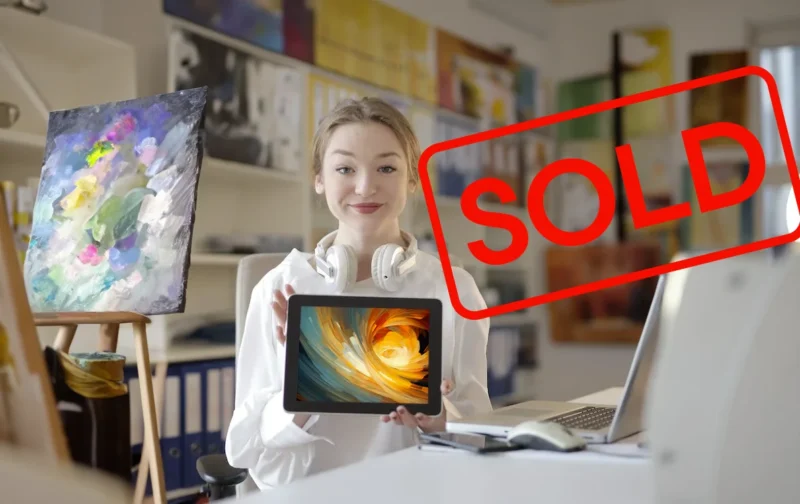In this article:
- Selling Digital Art Through Online Art Marketplaces
- Using Your Own Website to Sell Art
- Selling Digital Art on Social Media
- Leveraging Print-On-Demand Tools
- Tapping into Active Digital Art Communities
- Go Out and Sell!
Staring at your latest digital art, a nagging thought creeps in.
“Yeah this looks awesome…but will anyone actually buy it?”
I get it. You’ve poured your soul into designing something you feel proud of. Only to wonder if it’ll gather virtual dust instead of making virtual dollars.
It’s a frustrating place to be in. You want to make a living off your art, but have no clue if that pipe dream can become a reality. I’ve been there too.
When I first started, I had no idea if selling digital art could actually pay the bills. I obsessed over every download or small sale, agonizing whether this could turn into a legit income stream. The uncertainty ate away at me more than I’d like to admit.
But here’s the thing…
You ARE good enough. And people WILL buy your work. Finding clients may feel impossible right now. But I promise you, there are customers eagerly waiting to get their hands on your unique creations.
The problem isn’t your work. It’s knowing where to find those people.

Get 300+ Fonts for FREE
Enter your email to download our 100% free "Font Lover's Bundle". For commercial & personal use. No royalties. No fees. No attribution. 100% free to use anywhere.
You could keep guessing and second-guessing yourself forever. OR you could take control and learn exactly where potential buyers are hanging out.
I wasted too much time questioning my abilities when I should’ve focused on getting in front of the right audience from the start. And I want to help you avoid doing the same.
The truth is, the world NEEDS more of your art. But you have to put yourself and your work out there first.
So shake off that uncertainty, and let’s dive into the best places to get your digital designs seen and sold. This is the first step towards building a thriving business around your passion.
You ready? Let’s begin.
Selling Digital Art Through Online Art Marketplaces
The first place you should turn to is online marketplaces. These are websites specifically designed to connect artists like you with buyers looking for digital artwork.
Places like Creative Market and Etsy make it simple to set up a virtual storefront. You just create an account, upload your artwork, set a price, and that’s it. The platform handles all the backend work like payments, marketing, and customer service.
This means you can spend less time worrying about the business details and more time being creative. It doesn’t get much easier than that!
Online marketplaces also come with a huge advantage – a built-in audience. For example, Etsy has over 90 million active users while Creative Market sees almost 10 million visitors every month. These shoppers browse specifically for original art and design elements to use in their own projects.
So once your work goes live, it gets immediate exposure to millions of people. And many online marketplaces even feature select artists to give promising newcomers a spotlight.
You also gain the power of recommendations. Platforms use special algorithms to suggest your designs to users who have purchased similar artwork in the past. This creates a viral effect where one sale naturally leads to several more.
But the beauty of these websites is that you don’t have to commit all your time or resources right away…
You can easily test the waters first. Start by uploading a few of your best or favorite pieces. See how they perform. Experiment with different price points. Gauge customer reactions in reviews and feedback.
And if those initial products do well, keep adding to your online catalog!
Selling through online marketplaces means you won’t have to stress about the business setup, technology, or marketing at first. You can purely focus on creating and improving your artwork, which I’m guessing is the part you truly enjoy anyway!
Here are our top picks for selling through online marketplaces:

1. Creative Market
Creative Market is one of the largest marketplaces for selling digital assets like fonts, graphics, templates, and more. It has nearly 10 million monthly visitors, instant access to a huge customer base, and requires no lengthy approval process – just simply sign up and start selling!
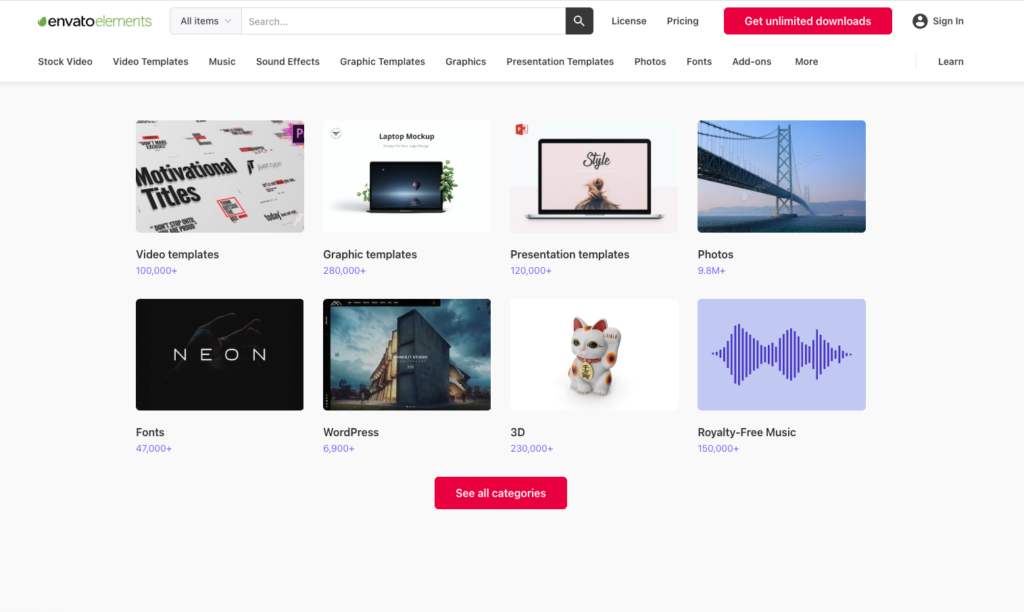
2. Envato Elements
Envato Elements operates on a subscription model, letting customers download unlimited creative assets for a monthly fee. As an author, you earn 50% royalties from each subscription payment. The site boasts a strong community of creative professionals as both sellers and buyers.
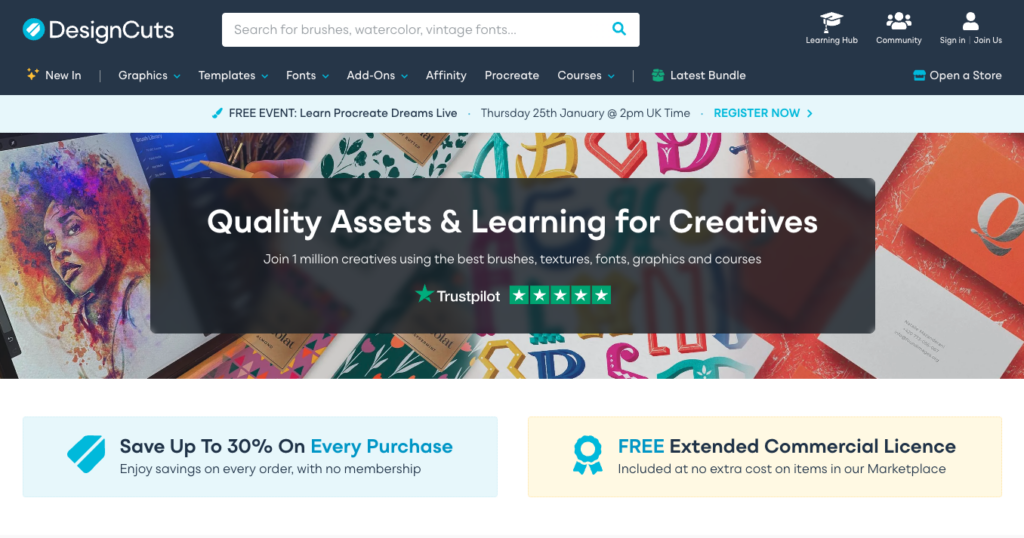
3. Design Cuts
Design Cuts offers deals and discounts on graphic design assets, making it an ideal marketplace if you create fonts, graphics packs, templates, backgrounds, and the like. They provide excellent promotional support too.

4. Dealjumbo
Similar to Design Cuts, Dealjumbo specializes in limited-time discounted asset bundles across graphics, footage, 3D models, and more. This makes it another great choice for template designers, texture artists, and creatives open to packaging items together for special deals.
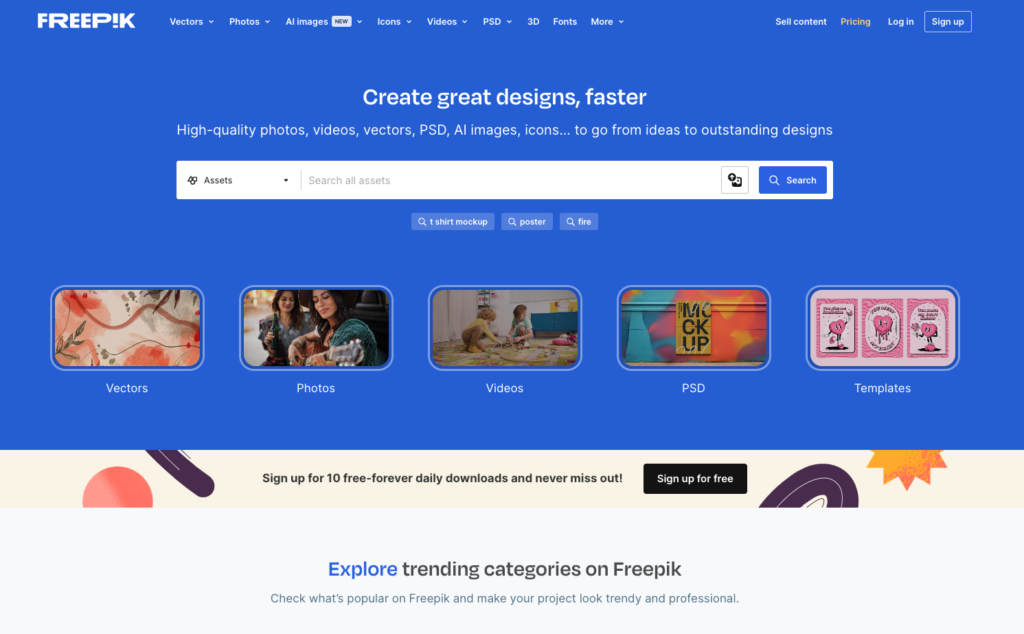
5. Freepik
On Freepik, you can submit vector illustrations, icons, templates, and various design elements for consideration in their free section or the paid marketplace. Items approved for the latter allow you to earn royalties when users pay to license your files at a quality level.

6. YouWorkForThem
As the name suggests, YouWorkForThem allows designers and artists to earn 50% commissions on creative work sold through their platform to end users. They have over 8,000 design assets available.
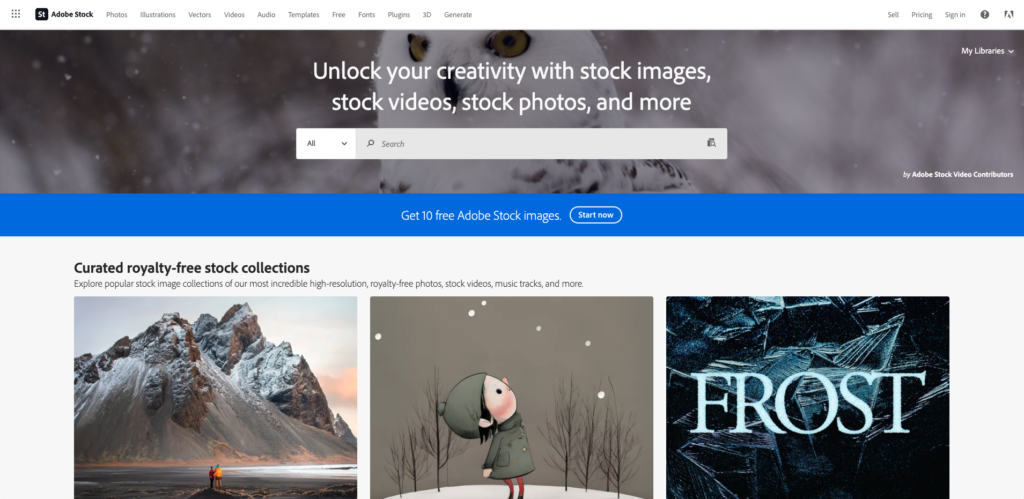
7. Adobe Stock
If you produce photography, illustrations, or vector graphics, Adobe Stock taps into the extensive existing Creative Cloud user base as a trusted resource for stock media. You retain 33% of each licensed image sale.
Using Your Own Website to Sell Art
Once you’ve tested online marketplaces and built some initial traction, I’d suggest venturing out with your own website as the next step.
I know, I know. Building an entire site might sound complex and expensive. Especially if you feel clueless about tech and marketing (been there, my friend).
But having your own online home opens so many doors when you want to sell art consistently over the long run. This custom platform lets you communicate directly with fans, promote yourself on a deeper level, and control the customer buying experience from start to finish.
Your website also establishes you as an expert brand in your artistic niche. Shoppers place higher trust in artists who have invested in their own professional domain presence.
And good news – you have options that make the website process incredibly simple! With today’s user-friendly tools and services specializing in payment software development, even non-techy artists can set up secure, smooth checkout experiences that build customer confidence and increase conversions.
Some of the most popular beginner-friendly website builders for creating your online art store include:
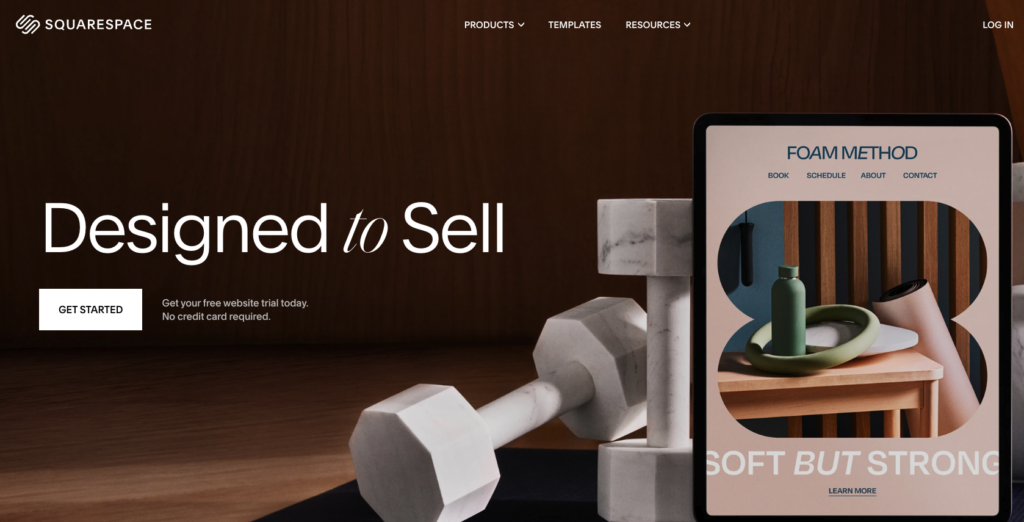
8. Squarespace
Squarespace offers elegant templates tailored specifically for showcasing visual creative work and selling art online. You can easily customize colors, fonts, layouts, and pages with its drag and drop editor without needing to know coding. Key features like integrated e-commerce, email marketing, customer relationship management, mailing lists, SEO optimization, analytics, and automatic image watermarking make it stand out for individual artists looking to self-host and sell art or prints.

9. Wix
Wix is another top website builder known for its simple user interface and extensive design template options, including special categories for artists, photographers, musicians and more. One advantage Wix offers is a built-in image editor to touch up artwork and apply graphic effects on the site. Large file hosting capabilities, sales tax tools, coupons, an app market, and blog integration also help artists showcase and sell work easily.

10. Weebly
Weebly allows anyone to make a professional art website through pre-designed themes and drag-and-drop blocks that require no tech expertise. Despite its simplicity, Weebly sites are highly customizable and come equipped with powerful e-commerce functionality like inventory management, shipping, reports, and automated taxes. Their SEO wizard provides custom keyword research and page optimization advice too.
And when it comes to handling the financial side of your art business—whether it’s income tracking or tax season—there are now tools that help you file taxes completely free, so you can stay focused on creating without stressing over paperwork.
So you no longer need fancy tech credentials or giant budgets to sell art from your own platform successfully and scale up revenue. The right tools now empower basically any artistic entrepreneur to build their vision.
And owning your site puts the reins fully in your hands. You cultivate the audiences you want, create direct community connections, and provide a personal experience visitors won’t find browsing Etsy or Creative Market’s mass catalogs.
Just imagine the pride you’ll feel telling collectors “Yup, that’s MY website for MY art!” Pretty awesome.
Selling Digital Art on Social Media
Once your website is established, don’t ignore the power of social media for selling art either. Platforms like Instagram, YouTube and TikTok have exploded into hotbeds of creative expression and commerce.

Some of the best social media platforms for artists to showcase and sell their work include:
11. Instagram
With over 1 billion monthly active users, Instagram is hugely influential for visual content creators. Post photos and short videos of your artwork, behind-the-scenes creative process, and studio life to start building an audience. Use features like shoppable posts and product tags to directly link Instagram content to online purchase pages or your website store. The seamless checkout functionality turns Instagram into a virtual art gallery.
12. YouTube
YouTube now has over 2 billion users each month, providing a massive opportunity for ongoing visibility. Creating longer video content that documents your artwork from concept to completion allows you to establish expertise authority. Casually promote sales or product launches through YouTube. Even compact loyal followings translate into sales over time as audiences feel connected and eager to support your art financially.
13. TikTok
As the fastest growing social media app with over 1 billion monthly active users, artists shouldn’t underestimate TikTok’s sales potential despite its association with viral dance trends. Short form videos showcasing your distinctive style and work have huge exposure potential. Use TikTok’s shop integration to add “Add to Cart” buttons directing viewers to online shops or product listings. The key is cutting through the noise by embracing the experimental, fun nature of TikTok even as an artist.
Leverage platforms matching your content strengths. All channels allow artists to forge direct engagement with supporters. Turn that relationships into sales by making purchase opportunities prominent yet natural across your social media ecosystem.
On these platforms, focus first on organically sharing and discussing your artistic journey instead of aggressive sales pitches. Social media offers an intimate chance to build an emotional connection with your ideal customers.
Let that relationship and trust develop, and many supporters will happily become buyers and collectors down the road.
Leveraging Print-On-Demand Tools
Print-on-demand (POD) sites are another fantastic way to make passive income from your artwork, especially when you’re just starting out.
Places like Redbubble, Society6, and Fine Art America handle printing your designs onto products only when someone places an order. This saves you from having to carry inventory or deal with manufacturing and shipping physical items yourself.
For example, you can upload a cool digital illustration to Redbubble. Whenever a customer wants that artwork on a t-shirt, phone case, notebook, etc., Redbubble prints and ships just that single order for you.
They deduct a base price for manufacturing and take a commission, while you earn royalties on each sale. This lets you leverage products beyond just digital files, without all the hassle of a traditional e-commerce business.
POD opens up more diversity too since customers can request your unique artwork or graphic on their item of choice, like apparel, home goods, electronics accessories, and more.
Just be sure to use niche tags and optimize your metadata so the right shoppers can discover your designs when browsing for products in that genre. For instance, a geometric wallpaper pattern with “botanical printable” tags is more visible to people looking specifically for plant decor art.
And if you create any holiday-themed or topical pop culture designs, those tend to sell particularly well on POD sites when they align with current events on everyone’s mind.
Keep in mind you earn a smaller royalty percentage compared to selling digital files directly. But POD makes up for it with mass ongoing visibility to millions of shoppers 24/7.
It’s fantastic passive income that lets your work keep making money while you focus on your next artistic project. Just upload once, then watch the sales roll in over time!
Here are some of our top picks for print-on-demand:
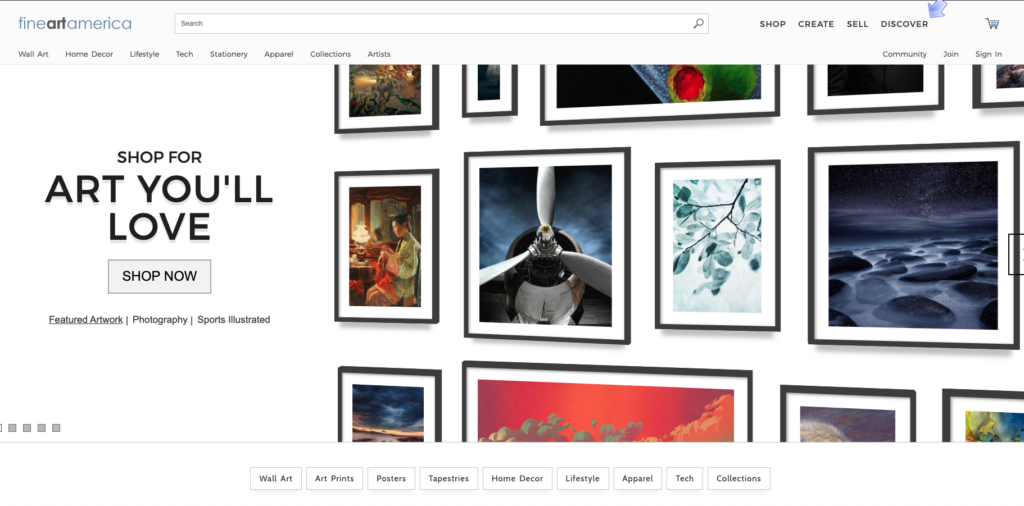
14. Fine Art America
Fine Art America allows artists to sell their work across prints, canvas pieces, posters, metal prints, acrylic displays, and much more. You set your own pricing and keep 80% from each order. They produce and ship all products on-demand so you don’t need to carry inventory.
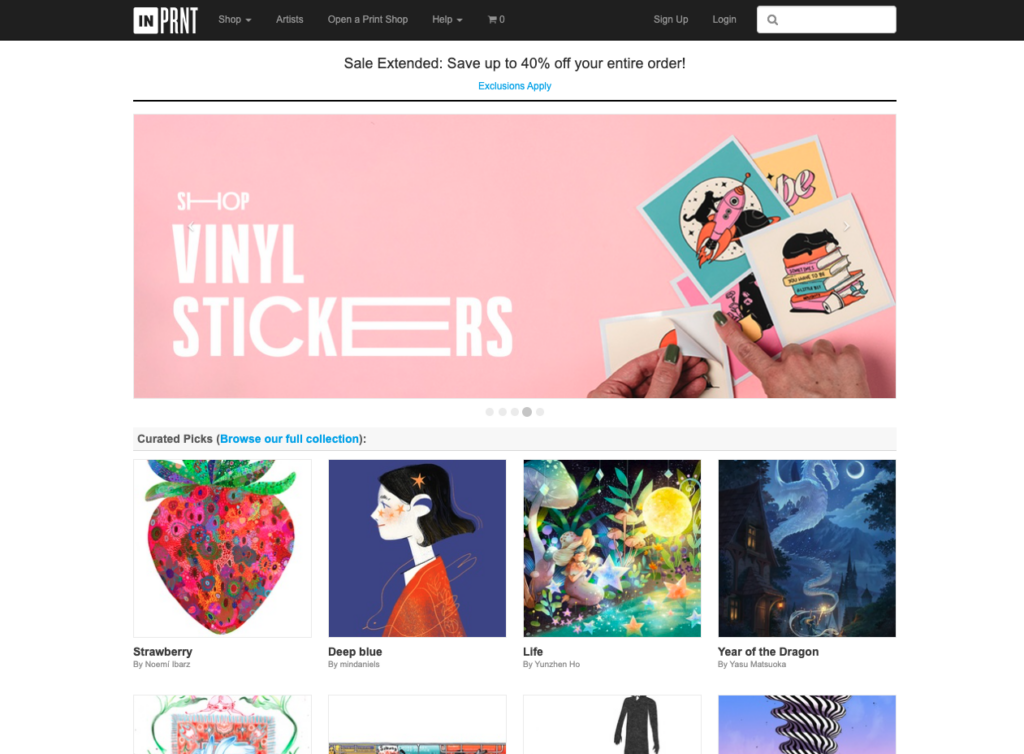
15. INPRNT
INPRNT specializes in printing independent art onto high quality, archival paper or canvas. As the artist, you earn 50% from each order. You can also choose to donate a portion of profits to a charity of your choice as well.
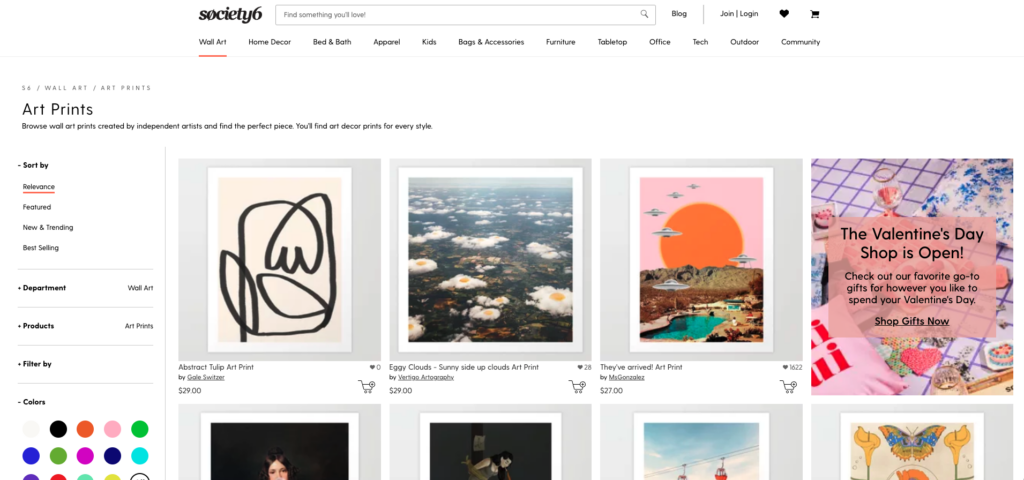
16. Society6
Society6 gives you the freedom to upload any digital creation imaginable, set prices as you wish, and watch them automatically appear across wall art, apparel, home goods, tech accessories, and lifestyle merchandise when purchased. You keep 10-30% from each order depending on the type of product sold.

17. Turning Art
Turning Art partners with commercial spaces to match art placements with aesthetics of locations like healthcare centers, hotels, and offices. You can earn royalties from monthly leasing fees or make commissions on outright art piece sales.
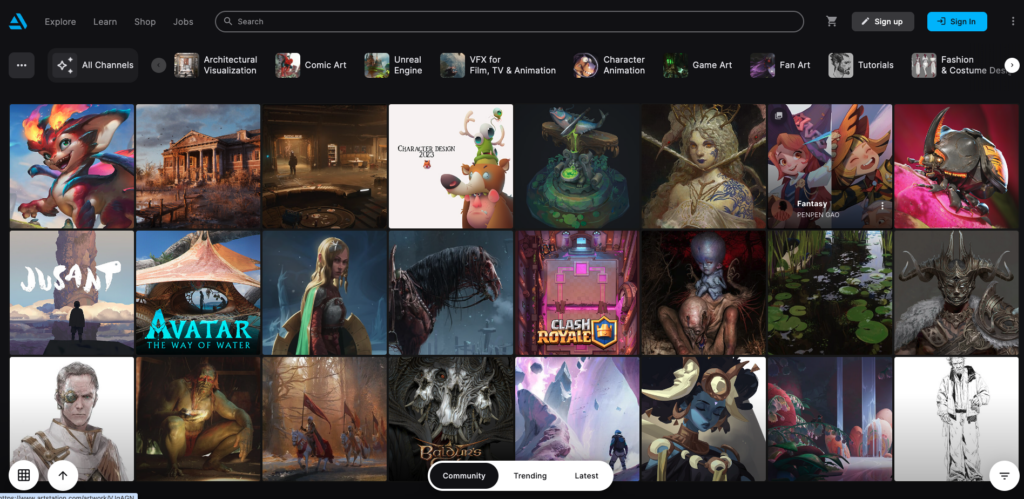
18. ArtStation
While focused on gaming and entertainment art, ArtStation also allows 2D and 3D artists to generate income through brush packs, video assets, tutorials, art prints, collectibles, and more. You keep 85% of each transaction using their built-in payment system.
Tapping into Active Digital Art Communities
Depending on your niche, consider also tapping into active art communities on platforms like DeviantArt, Behance, Dribbble, and Reddit.
These sites host more niche audiences of fellow artists, designers, gamers, and other creatives looking for inspiration or assets. But community members are often happy to pay the original artist if they discover an eye-catching logo, graphic, or character design they want to utilize.
Consider showcasing work on targeted online art communities like:
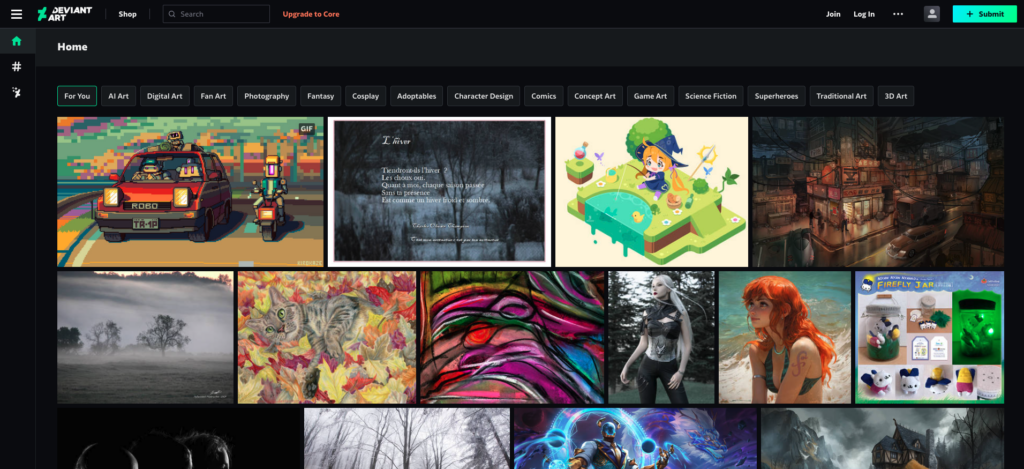
19. DeviantArt
With over 100 million monthly users, DeviantArt offers one of the largest creative communities. Upload your portfolio and interact in group discussions as a normal member first. Later, experiment posting limited availability commissions or examples of artwork available for sale to tap into a huge audience already passionate about supporting artists.
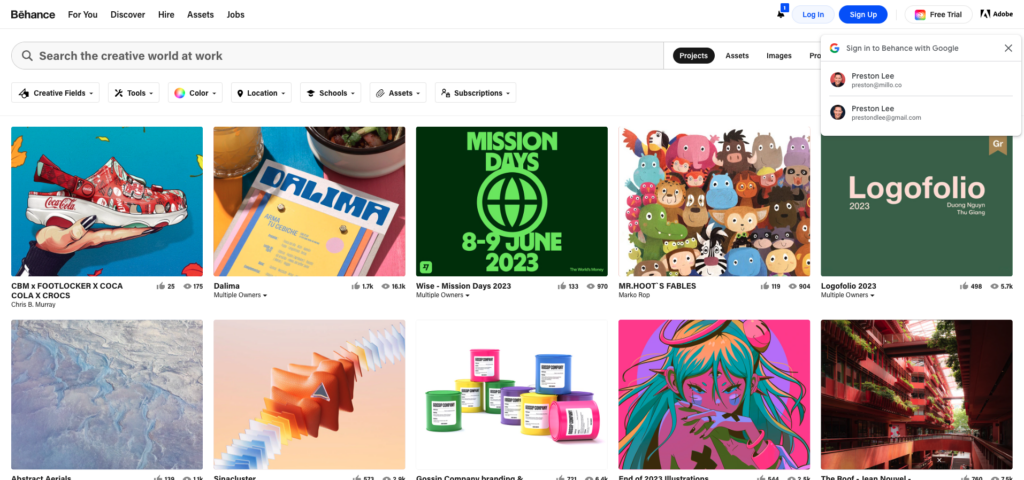
20. Behance
Behance allows you to create visually stunning galleries of your best work and creative projects. The site sees over 11 million monthly visitors. While Behance focuses more on showcasing work rather than selling, it’s an exceptional platform for discovery. Include prominent links to your online shop and social profiles so interested visitors can easily find purchase opportunities.

21. Dribbble
Dribbble boasts over 9 million monthly users and limits its community to proven artistic professionals. If accepted, it’s fantastic for exposing exceptional work to motivated potential clients. Links back to commission forms or online shops let impressed visitors proceed to sales avenues. Dribbble’s audience tends to have high budgets for original artwork and creative projects.
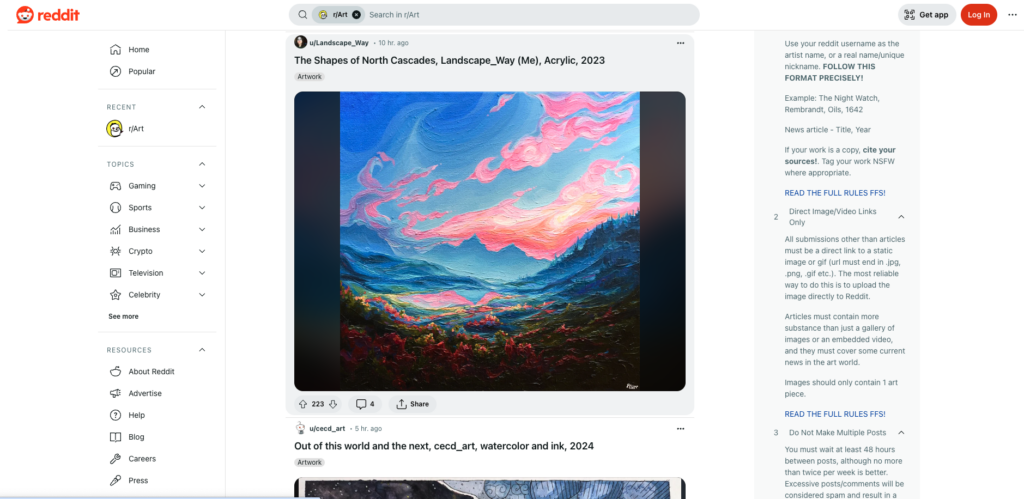
22. Reddit Art Forums
Reddit hosts endless active subreddits covering every art genre imaginable. Select related art forums to share work and interact organically with fellow creators. Be helpful, build authority, and later detail commission or sales options subtly without aggressive self-promotion. Reddit’s tight-knit communities eagerly support members they relate with.
The key in niche forums and groups is establishing credibility first before pursuing sales routes. Let relationships and word-of-mouth regarding your talents develop organically. Soon community members will feel comfortable purchasing exceptional work from someone considered among “their people” in a shared creative sphere.
Many artists first establish credibility by participating in group discussions and simply getting to know community members as “real people.” Then later they can experiment posting examples of paid artwork like commissions available.
I know this can sound scary. But take it slowly. Start small to learn what receives positive feedback and brings that sparkle of intrigue.
Soon the money will follow as you uncover which of your unique talents customers value most. Remember there is an audience eagerly waiting to fall in love with your work somewhere. Now get out there are find them!
Go Out and Sell!
I want to leave you with some final thoughts before you embark on this exciting journey of selling your art online.
First, know that there will always be some uncertainty and fear of the unknown when starting out. But rather than paralyzing you, let the thrill of uncharted territory inspire you instead!
Have fun testing creative ways to showcase your style and connect with potential fans. Don’t worry about trying to do everything at once or compare yourself to more established artists.
Start small and be patient. Try quick experiments to see what gains traction before spending major effort or money. Leverage tools that simplify the process for you.
The most important thing is putting yourself and your artwork out there consistently over time. Build an audience slowly but surely.
Next, remember that you have a distinct creative voice that NO ONE else possesses. I know it’s tempting to browse trendy genres and mimic what sells.
But lean into what makes YOUR art special and different even if you worry it’s too weird or niche. There are buyers looking for exactly what you offer who will love your weird!
And finally, enjoy the ride as much as possible! Being able to make a living off your creative talents is an incredible gift not everyone gets to achieve.
When uncertainty or imposter syndrome creeps in, reconnect to your passion and purpose. Focus on the thrill of making imaginative magic that moves you.
Sure you want your work to be financially valued. But never lose touch with the emotional value it brings you first. The rest will grow from that seed as you put yourself out there.
Now, what are you waiting for? The world needs more beauty and vision that only your art can bring. Time to start sharing it!
I hope this gives you renewed inspiration and a plan to move forward confidently. Please reach out if you ever want to chat more about selling your digital art. I’m always happy to help a fellow artist find their wings!

